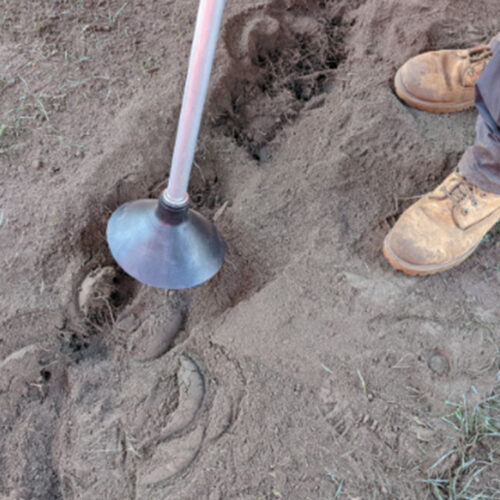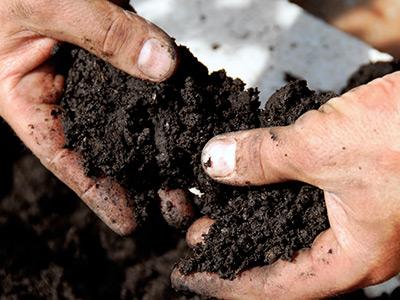As most landscapers know, the quality of your soil can make or break the success of the plants. The right level of microorganism activity, moisture, texture, pH, and nutrients is vital for soil success. One way to determine what your soil needs is through a soil analysis, which lets you determine the exact needs of your soil. Once you know that information, you can determine which soil products you need. Here’s more information:
Lack of Moisture
Lack of moisture, whether from drought, poor irrigation, or soils that drain too readily, will cause problems for plant development. Without sufficient water, the activity of soil microorganisms becomes inhibited, and regular plant growth and functions decline. A layer of mulch will help retain moisture in the soil, and have nutritional benefits as well. A treatment of Hydretain will help soil retain moisture better, meaning you’ll need to water less to get the desired results.
Sandy Soil
Sandy soils won’t just be present near the beach or water, but in any condition where soil particles are large and prone to drying. Sandy soils often have poor nutrient availability and can dry out quickly, due to evaporation and draining. Mix a soil amendment in and monitor the progress of the plants. SeaXtra (1-0-3), EnviroPlex, and NutriRoot (2-2-3) will all provide different benefits, depending on whether you need help with root growth, humic acid, or nutrients and water retention.

Nutrient Availability
With insufficient levels of nutrients, soils won’t be able to support plant growth in a healthy and sustainable way. Plants need both macronutrients and micronutrients to thrive, and without regular addition of nutrients from sources such as organic matter or supplements, plants will eventually deplete soil of nutrients. The pH level in the soil also matters, since too high or low pH may make available nutrients unable to be accessed or used.
Look to see if plants are having difficulty growing. Yellowed leaves, slow plant growth, dark green or purpled leaves, or browning in new leaves can all be indicators of nutrient deficiencies.
The exact solution will depend on what nutrients are lacking, but a soil drench of some kind will work for shrubs, gardens, and small trees. NutriRoot and Iron Plus will both work for drenches. For large trees facing nutrient deficiencies, try injections of Mn-jet Fe, which helps treat chlorosis caused by iron deficiencies. Tree injections will also bypass potential issues with soil pH by getting nutrients directly into the plant where they’re needed.

Iron Deficiency
Lack of iron in the soil will manifest as chlorosis, where can be identified by yellowing leaves in trees. Though this problem can affect many trees, it is especially prevalent in oaks and in areas with alkaline soils or poorly drained soils. Inject chlorotic trees with Mn-jet Fe or PALM-jet Mg to inject needed iron and manganese directly into the tree, and you should see a healthy green-up of leaves in a few months.
Compacted Soil
If soil has a naturally fine texture, such as soil with a high clay content, excessive foot traffic, vehicle use, or watering can lead to compaction. Compaction can make it harder for air and water to flow through the soil, which is detrimental for plants and roots. With less room to grow, fine root hairs will also struggle.
Compacted soil is also an issue in an area with naturally high foot traffic. If this is the case, consider finding ways to divert people to different areas where there may be pavement or a path. Aerating the soil will help break apart large compacted chunks and help air flow back through the soil. This can be done with the Supersonic Air Knife. A radial trench around a large tree will be beneficial to the roots. When the roots are exposed, add soil amendments such as EnviroPlex to improve soil structure and add in nutrients. Adding in compost will also provide additional nutrients.

Ensuring a healthy and strong soil base for your plants will lead you in the right direction for plant health care. If you’re ever uncertain about why a plant may be in failing health, look to the soil first.

